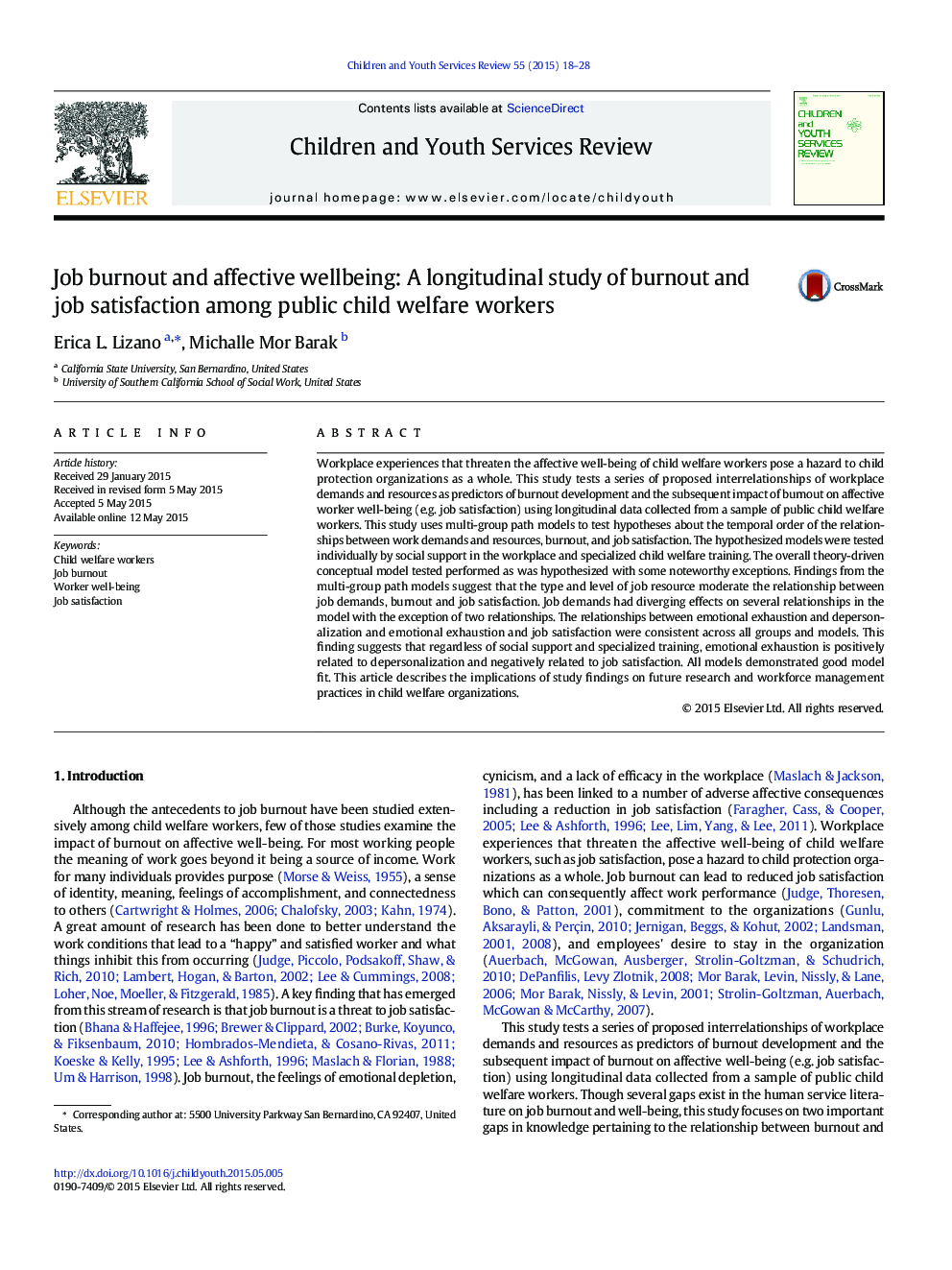| Article ID | Journal | Published Year | Pages | File Type |
|---|---|---|---|---|
| 345956 | Children and Youth Services Review | 2015 | 11 Pages |
•We model the interrelationships between job demands, burnout, and job satisfaction using a series of multi-group path models.•We test the moderating effect of supervisory support and specialized child welfare training on burnout and job satisfaction.•Emotional exhaustion decreased job satisfaction.•Social support and specialized child welfare training moderated the relationship between job burnout and job satisfaction.
Workplace experiences that threaten the affective well-being of child welfare workers pose a hazard to child protection organizations as a whole. This study tests a series of proposed interrelationships of workplace demands and resources as predictors of burnout development and the subsequent impact of burnout on affective worker well-being (e.g. job satisfaction) using longitudinal data collected from a sample of public child welfare workers. This study uses multi-group path models to test hypotheses about the temporal order of the relationships between work demands and resources, burnout, and job satisfaction. The hypothesized models were tested individually by social support in the workplace and specialized child welfare training. The overall theory-driven conceptual model tested performed as was hypothesized with some noteworthy exceptions. Findings from the multi-group path models suggest that the type and level of job resource moderate the relationship between job demands, burnout and job satisfaction. Job demands had diverging effects on several relationships in the model with the exception of two relationships. The relationships between emotional exhaustion and depersonalization and emotional exhaustion and job satisfaction were consistent across all groups and models. This finding suggests that regardless of social support and specialized training, emotional exhaustion is positively related to depersonalization and negatively related to job satisfaction. All models demonstrated good model fit. This article describes the implications of study findings on future research and workforce management practices in child welfare organizations.
Graphical abstractFigure optionsDownload full-size imageDownload as PowerPoint slide
